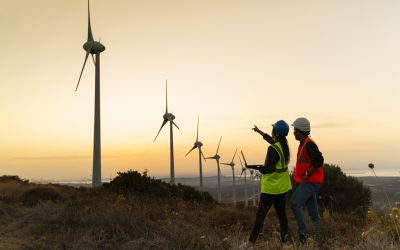What is needed to accelerate green bond uptake?
In the latest Climate Action webinar, three high profile panellists discussed the future of the green bond market

PRESS RELEASE - London, 13 July, 2016 - In the latest Climate Action webinar, Eric Usher, Head of the UNEP Finance Initiative, Sean Kidney, CEO and Co-Founder of Climate Bonds Initiative and Esohe Denise Odaro, Head and Bond Investor Relations of International Finance Corporation (IFC) discussed the future of the green bond market.
Market growth
The green bond market has grown significantly since it was created in 2007- tripling from $11bn in 2013 to $36.6bn in 2014, growing to $42bn in 2015, and expected to top $100bn in 2016. According to Sean Kidney of the Climate Bonds Initiative, issuers including big corporations and banks are primarily targeting investment in renewable energy, green buildings, low-carbon transportation, sustainable water, waste management and agriculture.
Eric Usher, Head of UNEP-FI, went on to highlight that despite this rapid growth green bonds still only represent 1 per cent of total bonds issued globally, meaning there is massive opportunity to accelerate growth even further. Green bonds are especially important investment tools in the wake of the Paris Agreement, as the cost of climate resilient infrastructure is particularly high.
Denise Odaro of the IFC explained the steps involved in green bond issuance at the IFC: establishing a criterion for the use of the proceeds, outlining an internal process for the project selection, setting up a system to segregate and manage the proceeds separate from the liquidity pool and finally, reporting the impact of the projects funded to their investors.
Current barriers
The main problem for the green bond market, as evoked by Eric Usher, is the lack of current supporting market infrastructure, with only nascent green bond ratings, indices and stock exchange listings- factors that continue to put off potential new investors. The pipeline of available green projects also remains insufficient, making the industry too small for the green bond market to engage fully.
Another major problem is the lack of access to Southern markets for Northern investors, exacerbated by the low appetite among Southern investors to drive the market forward. UNEP-FI aim to address these issues by working in collaboration with different stakeholders to increase the understanding of green bond opportunities and drive future investment.
Sean Kidney believes that private investment is greatly needed to achieve the transition to a low carbon economy, as central banks do not possess enough spare capital to invest in green issues. To facilitate new investment opportunities therefore, governments need to install specific regulations around green bond issuance. The role of a second and independent opinion is also crucial to allow private investors to select the proper opportunities in a transparent way.
Sponsored Content
Accelerating uptake
Answering questions from listeners, the three panellists went on to discuss the future of the green bond market and how its growth can be accelerated.
Denise Odaro evoked two principal advantages for the issuance of green bonds. The first one resides in the diversification of investment: additional funding is made available from a new set of investors who would not invest in a traditional bond. The second benefit is the awareness that green bonds raise, helping to shift priorities onto more climate friendly investment opportunities.
Sean Kidney emphasised the importance of the need to effectively monitor the growing green bond market. Presently, an unofficial best practice monitoring tool is available from the Climate Bonds Initiative. Issuers are asked to publish an annual letter explaining their latest activities, giving investors transparency on what the green bond is being used for. If the issuers fail to publish this letter a full disclosure is automatically publicised, which has the potential to impact their reputation if the bond has not been correctly managed. It is important to note that a reputation-based penalty here is more harmful than a purely financial penalty- with trustworthiness being a crucial factor in building the trust needed to appeal to investors.
The growth of the green economy as a whole is subject to change in accordance to the policies applied to address climate change by individual governments. Potential policy shifts are difficult to predict, meaning that green bonds can become part of a more stable transition strategy spearheaded by the financial community. Eric Usher mentioned the need for investors to lead on mobilising greening activities in addition to addressing climate risk. This could be done, according to Eric, by incentivising the low carbon investment to make it more appealing.
Sean Kidney concluded the webinar by stating that the biggest barrier to the uptake of climate finance for adaptation projects is a current lack of education. There is a significant need for education about climate change issues and what can be done to address these via funds made available by the issuance of more green bonds. The ‘clean’ criterion is also a problem, and clearer rules need to be applied by governments on a scientific basis.
For more from UNEP-FI, the Climate Bond Initiative, IFC and 30 leading speakers on green finance mechanisms join us at the Sustainable Investment Forum, taking place on 20 September during New York Climate Week. Register your place here.






